Scheufler Farms, Inc. Fall Harvest 2015 is officially over. It ended last Friday, when the crew finished in the milo field.
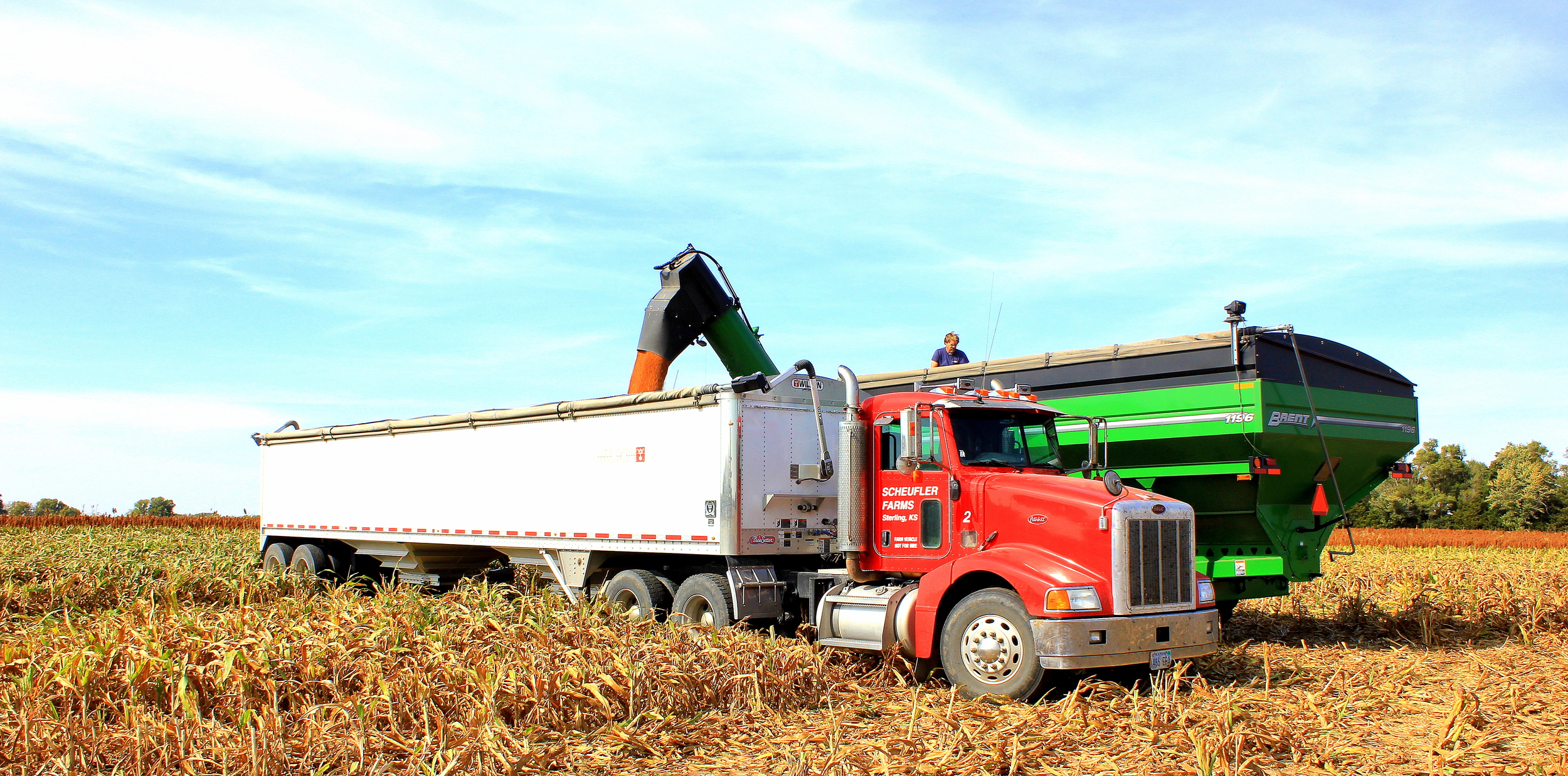
Grain cart filling the semi with milo
Usually it’s the double-crop beans that are last crop standing in the field, but it was a warm, dry fall. Usually the first freeze of the year halts the milo’s growth, which causes it to dry more quickly and allow it to be harvested before the last of the beans. The first freeze in Central Kansas came late this year.
Milo, or sorghum, is a lesser-known grain. It certainly has its benefits, however, so I’m excited to introduce you to this commodity crop. I grew up calling this grain milo, but around the world (and commercially), it’s known as sorghum. So I don’t confuse you, know that I’ll use these names interchangeably.
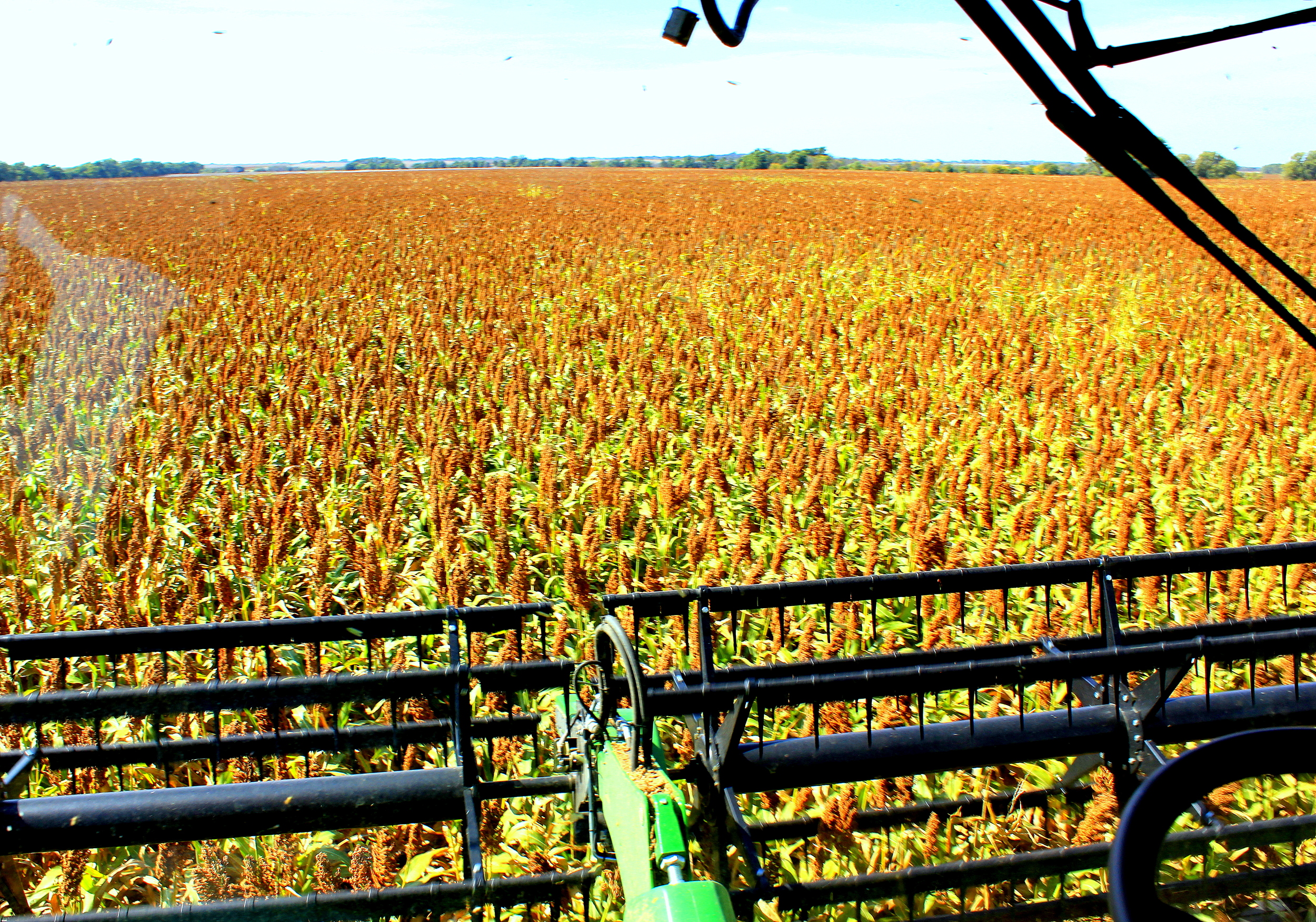
View from the cab of the combine
Milo in Modern Agriculture
Milo originated in Africa, which is likely why its modern-day version is so drought-resistant. In the United States, milo is grown in drier climates – mostly in Kansas, Texas, and the Oklahoma panhandle. A little is also grown in Eastern Colorado, parts of Nebraska, and around the Mississippi River. Worldwide, it is still a major grain produced in Africa and Asia due to its high tolerance to drought.
Sorghum is very efficient in terms of bushels per water; it yields almost as much as corn – about 90 bushels per acre on my dad’s farm – without using any irrigation (that is, extra water above what the rain provides). Learn more about how milo grows here.
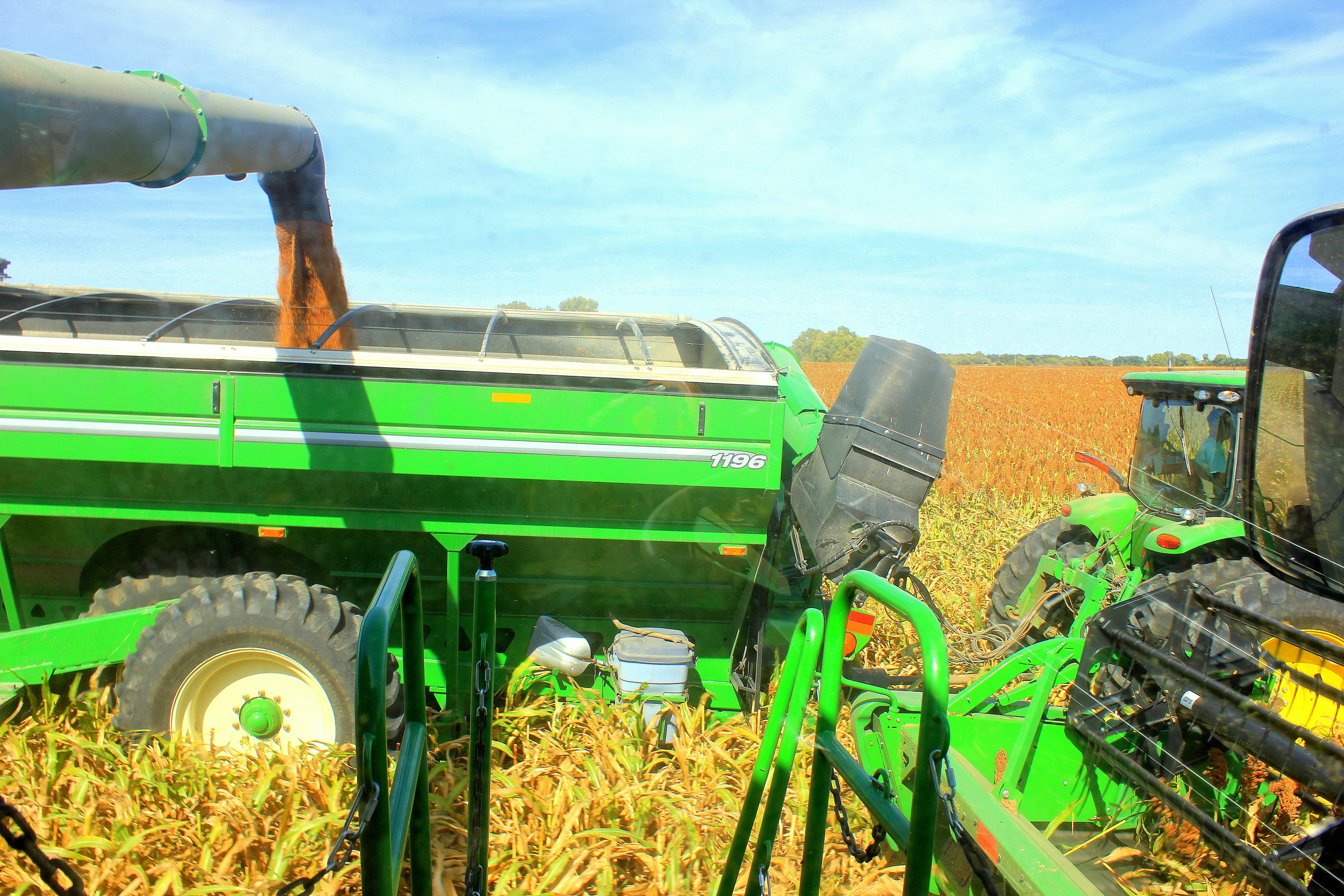
View from the cab of the combine, unloading into the grain cart.
Milo has not been genetically modified. It’s a relatively small market, so the demand for seed that would cover the cost of research and development just isn’t enough of an economic incentive for seed companies to spend the money.
The milo my dad farms is red in color, but different varieties of sorghum can be white, yellow, brown, and even purple.
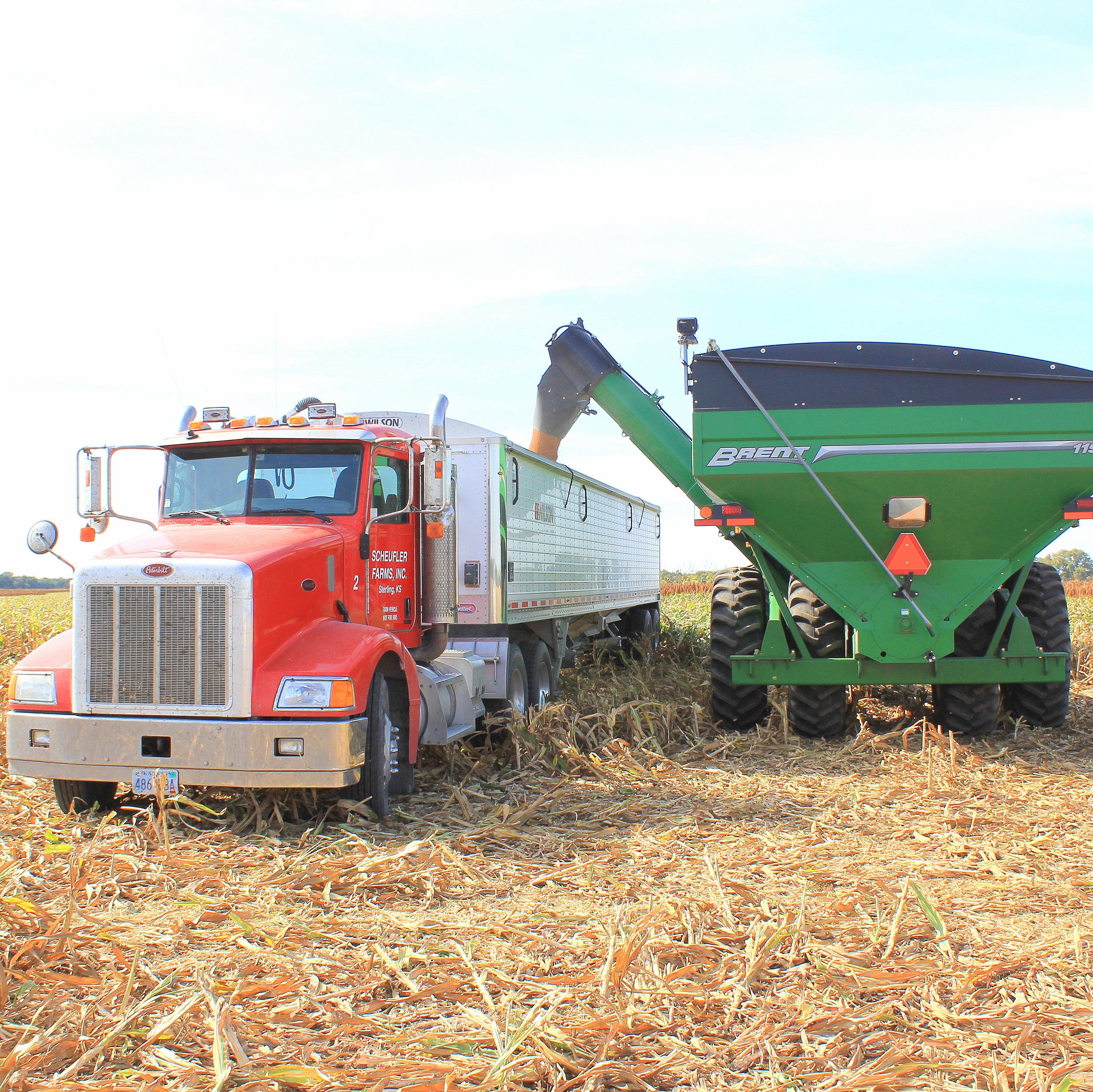
Another view of filling the semi with milo from the grain cart
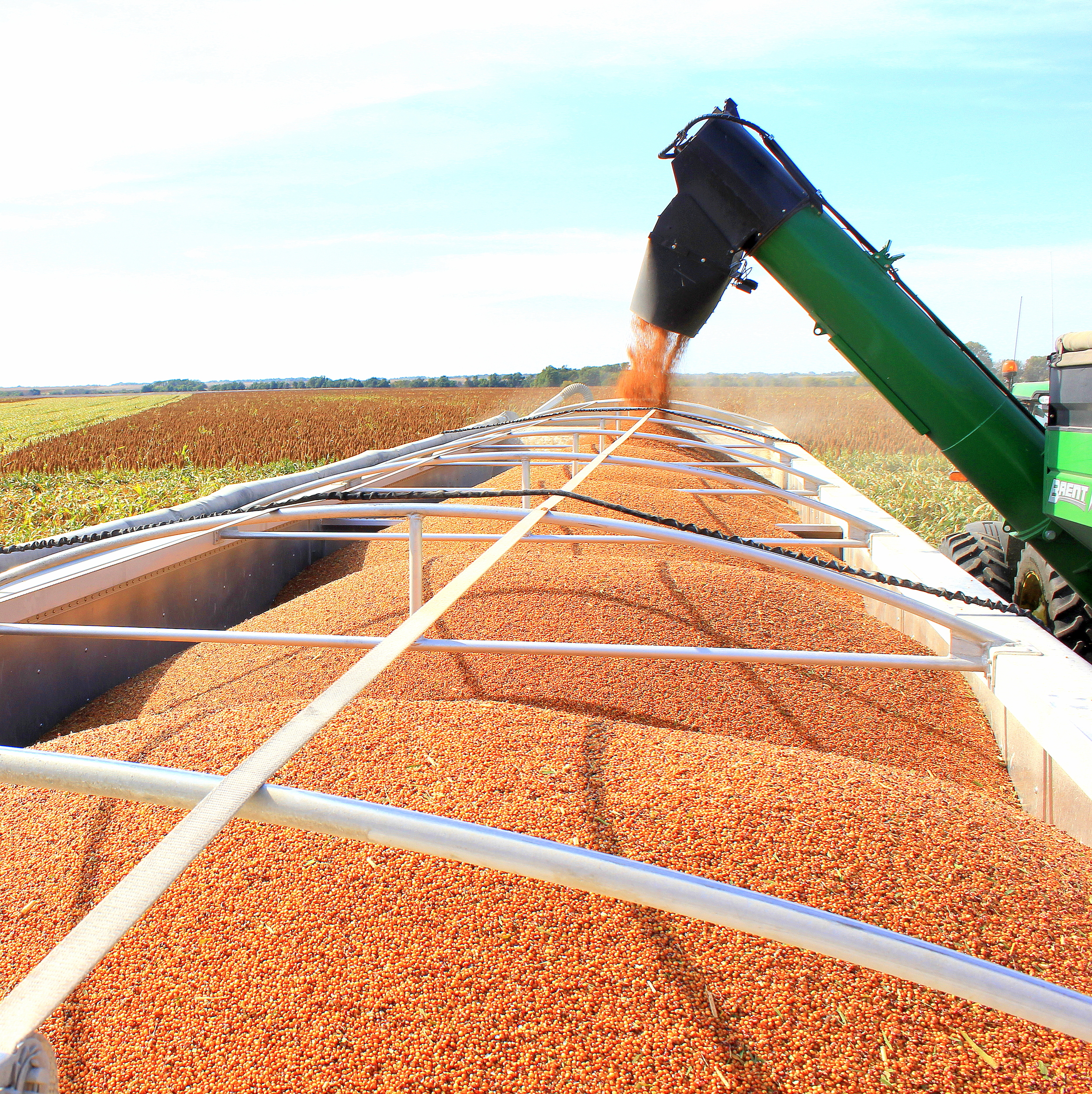
How is milo used?
Ethanol: You’ve probably come into contact with milo without even knowing it. Perhaps you’ve filled your car with gas that states that it contains 10% ethanol. Sorghum is a popular grain to use for ethanol production, as one bushel produces as much ethanol as one bushel of other grains, while using one-third less water. About 40% of sorghum in the U.S. goes to ethanol production.
Human food: Milo is a gluten-free grain, so with the rise of awareness about Celiac Disease and Non-Celiac Gluten Sensitivity, sorghum has become an increasingly popular grain to use as a gluten-free alternative flour. It’s used in gluten-free flour blends, gluten-free beer, or eaten whole, either popped (yes, like popcorn), or steamed.
Animal food: Sorghum is used to feed cattle (both for producing beef and dairy), pigs, and chickens. It’s also used in some pet food recipes. It’s higher in starch than corn, and so needs to be balanced with grains higher in protein and fat. Animal feed is an important market for sorghum, and all parts of the plant (grain, stalks, and leaves) can all be used as feed.
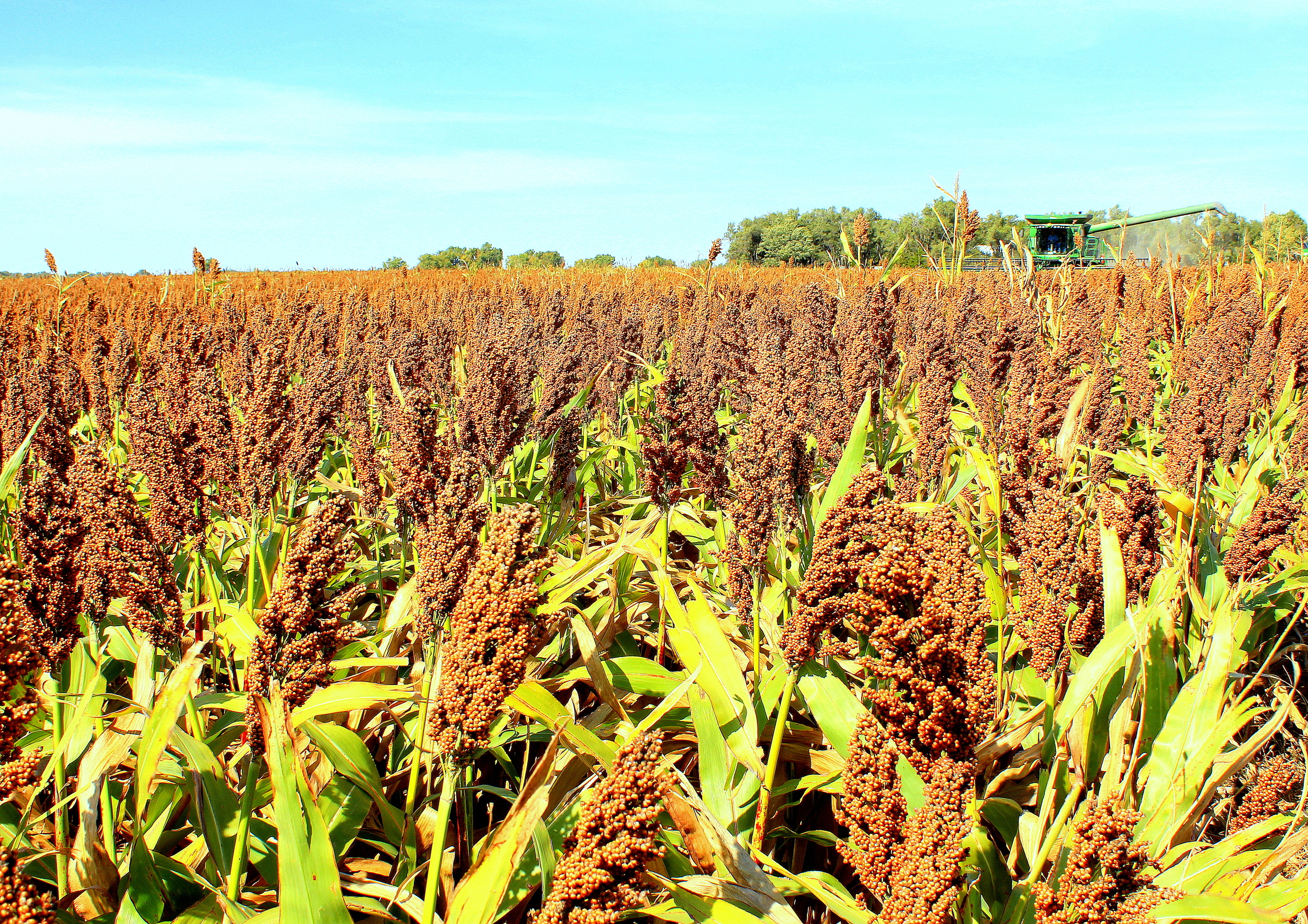
Milo in the foreground, combine in the background
Milo’s Nemesis: Shattercane
For almost every crop, there is a weed that is quite similar to the plant, but doesn’t yield the seed that the farmer is trying to produce. For milo, that weed is shattercane (you’ll have to check Google Images for photos – my dad’s fields are completely clean 😉 ). There aren’t any herbicides (chemicals that kill plants) that kill shattercane that don’t also kill sorghum.
Thus, my dad relies on his crop rotation to control shattercane. In years when milo isn’t the crop in the field, he makes sure to prevent shattercane from taking a stand, so it’s not much of a problem when sorghum is planted. If shattercane does start to grow, really the only option to get rid of it (when a crop is in the field) is to go out and pull it.
They call that roguing a field, and it’s the most terrible thing to do (says every 10-year-old farm kid ever). Roguing is literally walking the acres of a field until coming to the unwanted weed, then plucking it from the ground. Roguing wheat was my first real job, if you were wondering. You can see why I really value my education and air-conditioned day job.
A view of milo (sorghum) harvest from the cab of the combine – cutting milo and unloading grain into the grain cart.
Milo is a beautiful plant, but a dusty crop. It’s itchy and after spending a day in the field, I was sneezing more than usual. It is a wonderful grain, though, perfectly suited for the fields of Kansas.
If you have a chance to pass through rural Kansas next fall, be sure to admire the milo for me. I’ve always loved the vast sea of red against the brilliant blue sky.
With love, from Peas and Hoppiness.